OnHolocaust Remembrance Day , it has been our desire, for some years now, to tell stories of Jewish artists who experienced racial hatred and the tragic experience of theHolocaust on their own skin, deportation to concentration camps and the inhumane conditions they had to endure at the hands of the Nazis guided by one and only one purpose: the total elimination of a race they considered not pure and therefore inferior. Stories that in most cases ended in the most tragic way, stories of people who saw their loved ones die and perhaps they were saved, taking all the priceless pain with them; stories of continuous suffering because nothing can be forgotten. And nothing must be forgotten, especially by those who never experienced the Shoah, so that nothing will ever happen again. Not only on the occasion of this day but, beyond rhetoric, every day of the year we should be reminded that no one has the right to trample on the dignity of another person and even go so far as to kill him or her for whatever reason it may be.
The story we would like to tell you today is that of an artist who survived the Holocaust, Samuel Bak (Vilna, 1933), who is still alive today and was named in November 2017 after a museum as part of the State Jewish Museum in Vilna, the capital of Lithuania and his hometown. Bak donated many of his works chronicling his artistic activity to this institution, and the institution paid tribute to him by dedicating part of the museum to him while he is still alive so that it may become a testimony to his life and art for present and future generations. “I have reached an age when most of my life is now behind me, and I have been very fortunate. My art is appreciated and allows me a dignified life, it has granted me awards, recognition and honorary degrees, but each time I felt lonely,” the artist himself had said at the opening ceremony of the museum dedicated to him. “Today, however, I have the distinct feeling that a whole crowd surrounds me: my father, grandparents, aunts and uncles, and a huge crowd of faceless Jews from old Vilna, a multitude of people, a third of the city’s population, whose lives came to a tragic end. It is for them that I donated to the Lithuanian state a large collection of my output. It is to their memory that I dedicate the Bak Museum.”


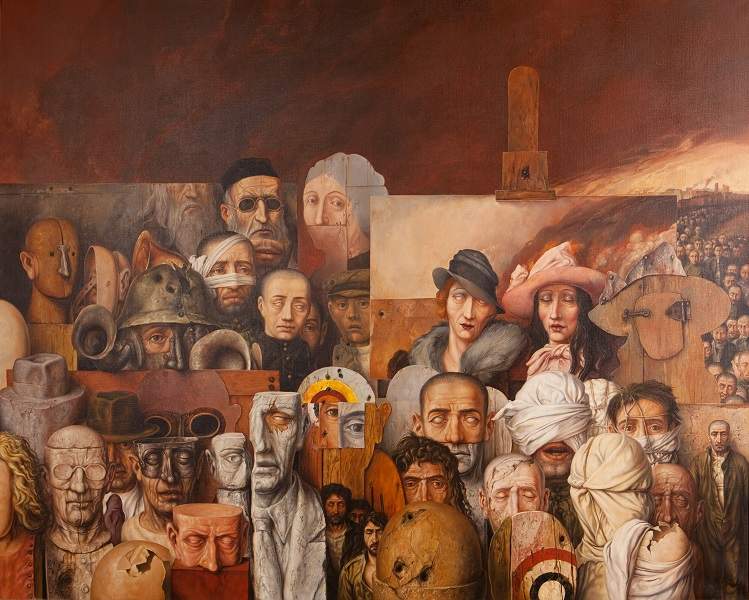
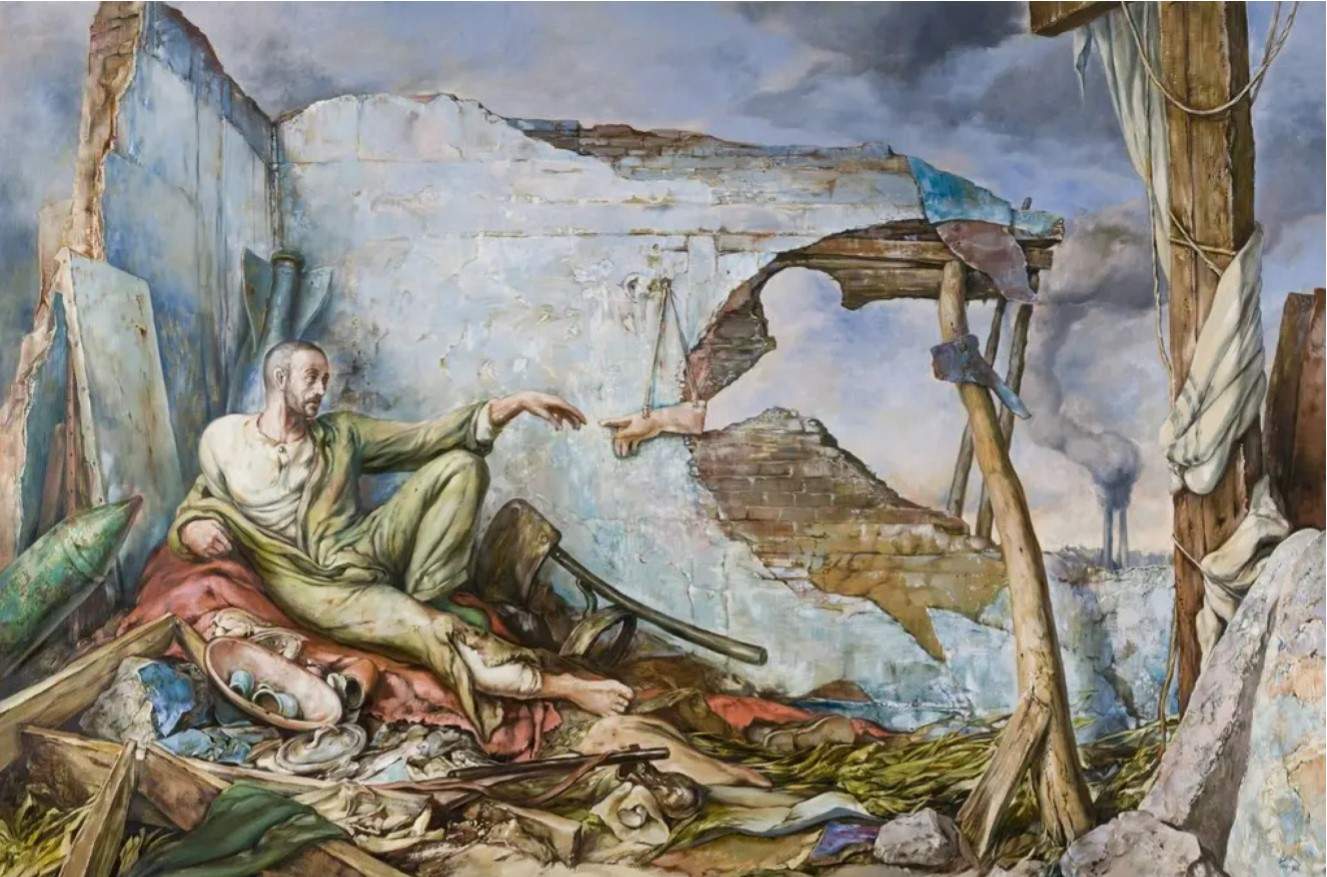
Born in 1933 in Vilna, Samuel Bak showed extraordinary artistic talent as a child, but like all Jews at the time of theNazi occupation , he had to suffer racial abuse: Vilna was occupied by the Germans in 1940 and therefore Samuel and his family were forced to move to the city’s ghetto. He and his parents were later transferred to a forced labor camp (Vilna’s Arbeitslager 562), and at the end of the war the only survivors of his family were he and his mother because they managed to take refuge in a Benedictine convent. His father was shot in July 1944, just days before liberation by the Soviets. He and his mother left the country and from 1945 to 1948 they lived in refugee camps in Germany. They later emigrated to Israel, where Samuel studied art at theBezalel Academy of Arts and Design in Jerusalem; he then continued his studies in Paris, spent various periods in Rome, Switzerland and Israel, and settled permanently in the United States where he still lives. Experiencing the Holocaust as a child, fortunately managing to survive, and later following his passion for painting, themes related to that period can be found in his works: indeed, during his career he transferred to canvas everything related to the atrocities of the war. They are therefore works with a strong impact, where destruction and fragmentation reign in both the subjects and the settings depicted, but above all they are significant from a historical and social point of view, because they depict what he had seen of the war through his eyes as a child. Many of his images derive from his childhood, such as teddy bears and toy boats (one example is Interruptions) that become symbols oflost innocence. These are works that express the memory of the Holocaust and the suffering of a survivor that he tries to live with throughout his life. Samuel Bak is indeed an artist who has been able to represent the feeling of loss, the destruction of the family world and the world around; it is a mourning seen from a private point of view, but which becomes universal in scope. Significant is the painting The Family, in which the artist dedicates the work to the memory of his family members killed by Nazi madness.
“I know that what I paint stems from a compulsive need to make sense of the miraculous fact of my survival,” he had commented. “It tries to appease a sad sense of loss. It stems from the fear that, in a world of unprecedented upheaval, things are never what they seem. My work reveals a reality observed through the eyes of a child, who has suddenly grown up. Some might call it trauma processing; I hope my art is more than that.”
Bak has never painted scenes of mass death, but he has used his personal experience to refer to a danger of collective amnesia with respect to all the acts of barbarism happening in the world at any given time.
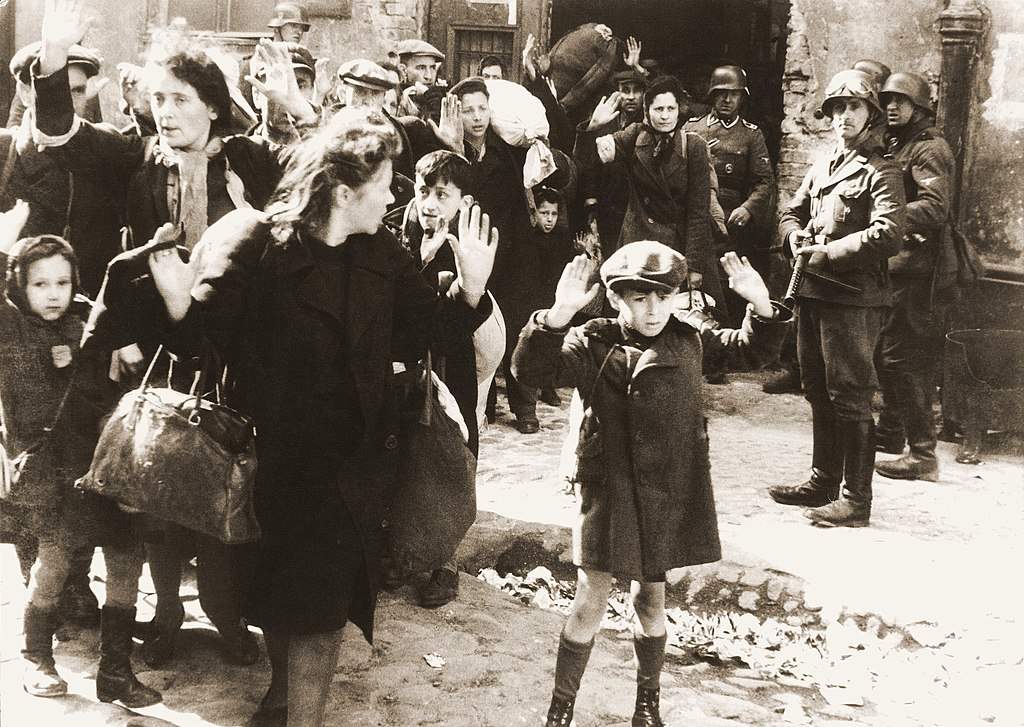


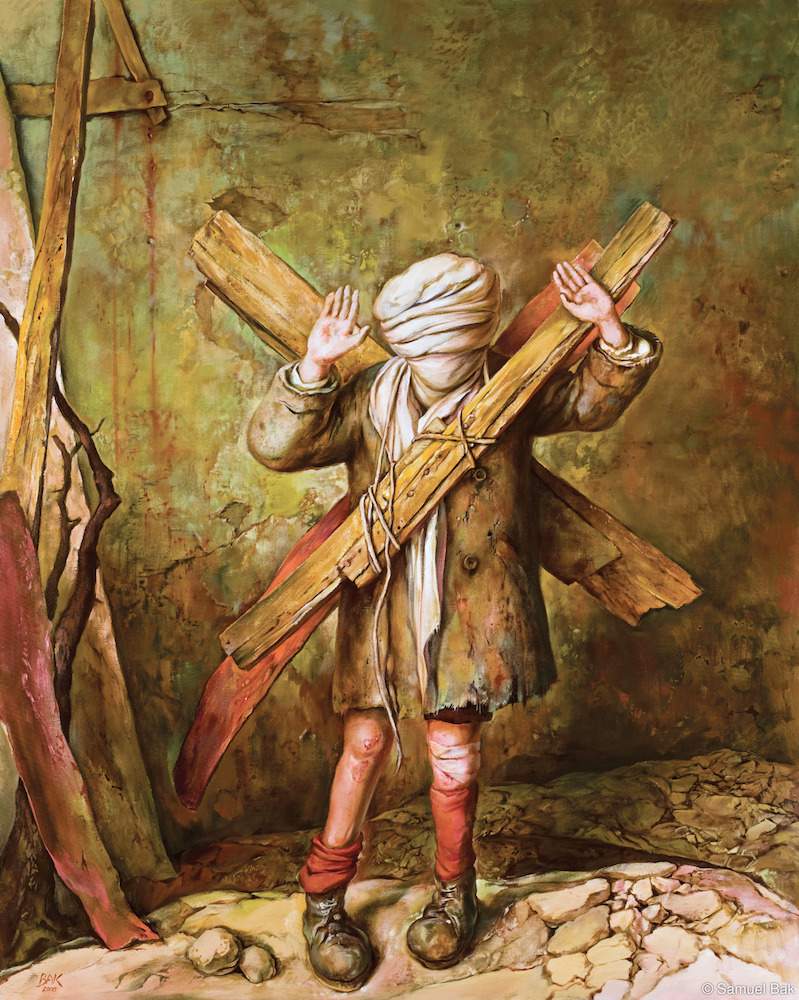
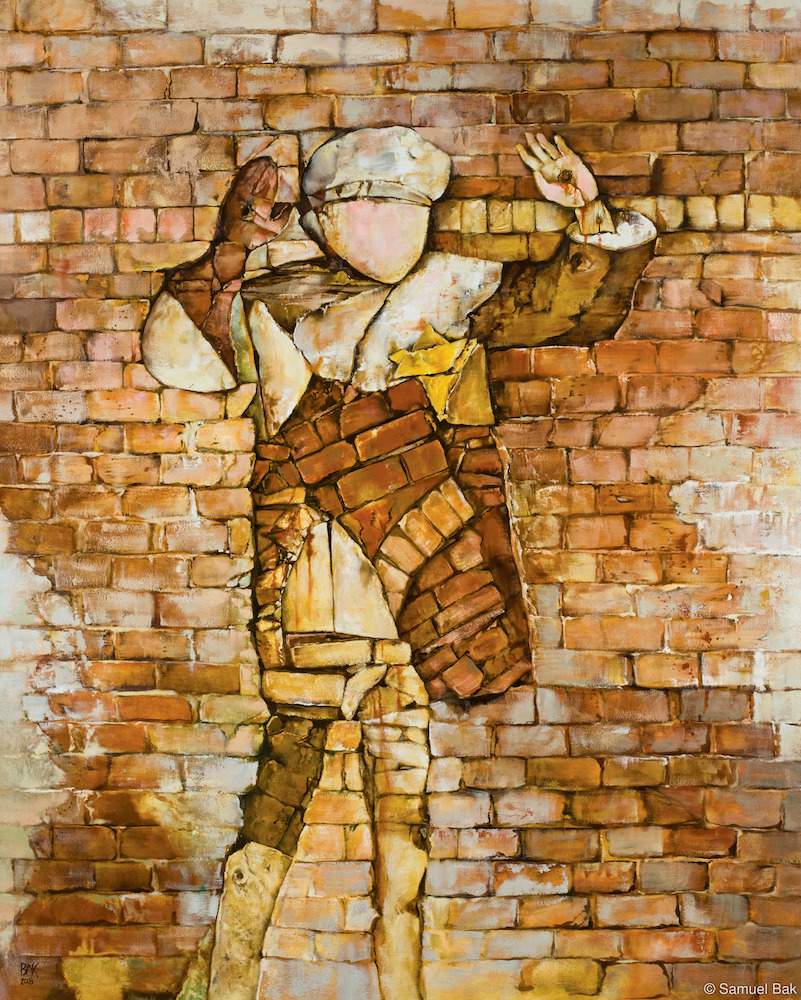

Inspired by Michelangelo’s Creation of Adam, a masterpiece of the Sistine Chapel vault, five centuries later, he made Creation of Wartime III: dressed in a tattered uniform Adam is seated, in a space bounded by what remains of two walls, on a pile of debris, remnants of a house, including dishes, worn shoes, dirty blankets and a broken chair; the man reaches out his arm to touch with his fingertips (here the comparison becomes blatant) the fingers of God, or rather, of the silhouette of God formed by the hole in the back wall. The silhouette stands for God’s absence during the Holocaust, which is alluded to by the smoking chimneys of the crematoria seen in the distance. In contrast, the cross on the right to which a white cloth is wrapped alludes to the crucifixion of Christ. The painting is replete with references to war and the destructive force of man; the artist thus does not depict here the creation of humanity, but the existence of man already in the aftermath of war as opposed to the absence of God. Bak thus questions the very existence of God for failing to stop the killing of so many innocent victims.
One of the most recurring symbols is that of a child with raised hands, inspired by the famousphotograph of the Jewish child in the Warsaw Ghetto, about which Bak wrote, “I couldn’t help but reflect on the millions of children who die in man’s senseless conflicts, wars and genocides, past and present. I thought, ’What unspeakable abuse of our innocent youth.’” In the Icon of Loss series, the artist took the pose of the child from the famous shot and reinterpreted it in various versions, as a silhouette in a brick wall, as a flesh-and-blood child coming toward us after the crucifixion or inside a burning wooden structure. A child who could have been Samuel Bak himself, and here all those images that tell of the suffering of his child alter ego take on a universal meaning.
That suffering never left Bak man and artist, and his works, as well as the museum named after him, bear witness to that. He was saved, but Death marked him forever.
Warning: the translation into English of the original Italian article was created using automatic tools. We undertake to review all articles, but we do not guarantee the total absence of inaccuracies in the translation due to the program. You can find the original by clicking on the ITA button. If you find any mistake,please contact us.